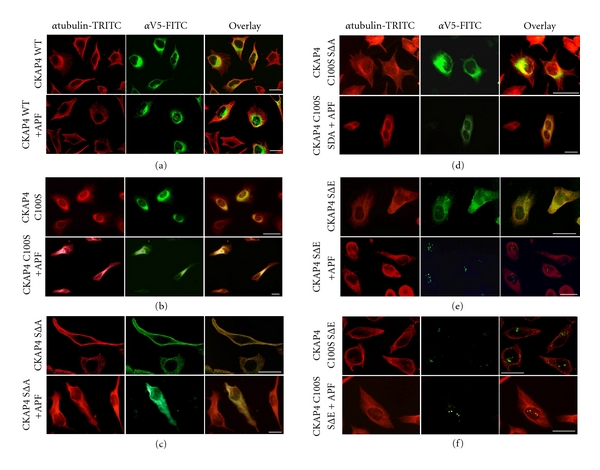Figure 3.

CKAP4 phosphorylation and palmitoylation regulate CKAP4 trafficking. CKAP4 mutants that mimic constitutive depalmitoylation and various states of serine [3, 17, 19] phosphorylation were generated to determine the effect of these two posttranslational modifications on the subcellular distribution of CKAP4 in response to APF (see Table 1). HeLa cells were transfected for 24–36 hours with the construct indicated to the left of each panel. Cells were serum starved for 6 hours and then treated with APF (20 nM) for 18–24 hours. Subsequently, the cells were fixed in 4% buffered paraformaldehyde, permeabilized with 0.1% Triton X-100, and immunostained for (1) β-tubulin (red; TRITC) and (2) V5 (green: FITC) (as described in Section 2) to distinguish the transfected, V5-epitope tagged WT (a) and mutant versions of CKAP4 from endogenous CKAP4 (b)–(d). Mutant versions of CKAP4 that cannot be palmitoylated (C100S) or phosphorylated (SΔA) do not translocate to the nucleus in response to APF. (e) Those that mimic phosphorylation (SΔE) translocate to the nucleus in response to APF. (f) CKAP4C100SSΔE, which is constitutively depalmitoylated and phosphomimicking, is expressed primarily in the nucleus. Images taken in each channel were superimposed to illustrate the distribution of mutant CKAP4 with respect to the cytoskeleton. The cells were imaged by epifluorescence or confocal microscopy at 60X and 63X, respectively, (Scale bars = 25 microns).
